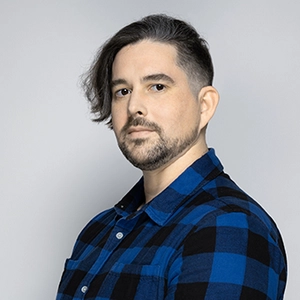If you walk (or drive) down Prague's busy Legerova street above Wenceslas Square, you might see an improvised street art-like memorial honoring Jan Palach and Josef Toufar adorning a derelict building. Both are famous figures in Czechoslovakia's history with communism, but you may not be aware of their connection to the location.
The building at Legerova 61 is Prague's former Borůvkovo Sanatorium, a private clinic that was transformed into a specialized burn center during WWII. It's the location where Palach was treated for burns after his self-immolation in 1969, and where doctors attempted to save Toufar's life after his torture by communist StB officers in 1950. Both men died at the address.
The Borůvkovo Sanatorium was transferred to various state institutions from the 1970s through the 2000s, and fell into disrepair over the decades. It was sold to a private company in 2015, with plans to convert it into a hotel. No movement has been made at the location since then.
In 2014, artist Otakar Dušek installed the improvised and technically illegal memorial to Palach and Toufar on the facade of the building.
And despite the fact that the building is now owned by a private company, the City of Prague 2 has been negotiating for the past six years with its current owners on installing a permanent memorial to Palach and Toufar at the location. This week, they announced that those negotiations had been successful.
"We are pleased that after almost six years we have finally reached an agreement with the owners of the building where the Borůvkovo Sanatorium once operated," Prague 2 Mayor Alexandra Udženija stated in a press release.
"With all due respect for private property, there are certain places where important moments in our history took place. And this place is one of them. Josef Toufar and Jan Palach deserve a dignified memorial and an official place of reverence. I thank all my colleagues and the owners of the building for finding common ground."
According to an agreement reached between Prague 2 and the building's current owner, a cafe will be established at the ground floor of the location, and feature a permanent exhibition dedicated to Palach and Toufar.
The exhibition will include a relief and memorial plaque on the exterior of the building. The appearance of both the memorial and the cafe are subject to the approval of the City of Prague 2.
"We could not agree to the original project documentation submitted by the owner for joint zoning and construction procedure," adds Prague 2 Deputy Mayor Václav Vondrášek, who is in charge of monument care for the district.
"Complicated negotiations with the owner followed [...] We are glad that an agreement was reached in the end."
Prague student Jan Palach set himself on fire in January, 1969 as an act of protest against national apathy following the 1968 Warsaw Pact Invasion of Czechoslovakia. He has since become recognized through monuments around the world, and his story was told in the HBO miniseries Burning Bush and the 2018 theatrical feature Jan Palach.
Toufar's story is less well-known in the English-speaking world. He was a Roman Catholic priest whose parishioners noticed an iron cross move behind him during a sermon in December, 1949. While Toufar himself did not see the cross move, he recorded testimony from 19 witnesses in what became known as the Číhošť miracle.
Communist officials, who had seized control of the country the previous year, forced Toufar to sign a confession admitting to faking the miracle under brutal torture in an attempt to discredit the Catholic Church.
A show trial was planned, but Toufar died from injuries suffered at the hands of his captors at Prague's Borůvkovo Sanatorium before it could take place. The autopsy report was altered to hide mention of his torture, and Toufar was buried in a mass grave under a false name. His family was informed of his death four years later.












 Reading time: 3 minutes
Reading time: 3 minutes 



























